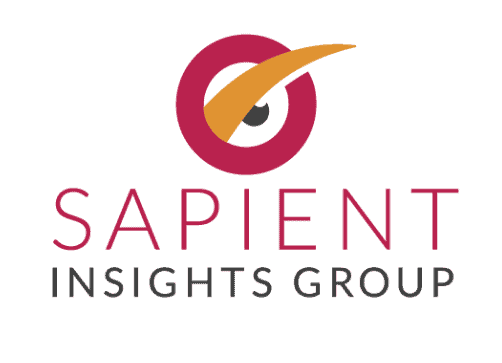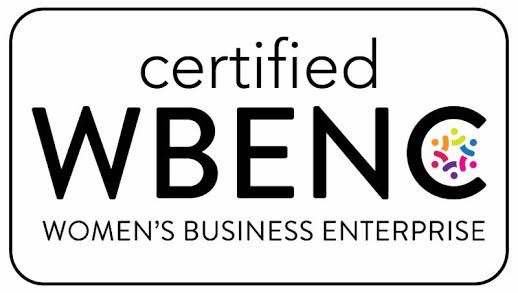This last year, a global pandemic changed how most employers think about how work gets done in their organizations. Yet, even before this, CEOs and CHROs should have already been working to address the “skills gap” within their current workforce.
A skills gap is when an employee might not be able to fully perform their role due to the gap between the skills they currently have and the skills they need to be successful. And, because skills vary depending on the job in question, a skills gap likely means different things for different companies. It could be the inability to find talent with the appropriate skills needed to fill vacancies in the organization’s most critical roles. Or, it could be the gap in competencies within the current workforce, either technical or soft skills.
Regardless of what type of gap it is, this is a crisis that has been headed our way, like a speeding train, for years. And there doesn’t seem to have been much progress made in plans to address the shortage.
Terms like “future of work,” “automation of jobs,” “AI adoption,” and “digital reskilling” have all been in our vocabulary for quite some time now. As we continue to head down the path towards a skills gap crisis, these terms are becoming more relevant than ever.
According to the Future of Jobs Report 2020 from the World Economic Forum (WEF):
- The workforce is automating faster than expected, displacing 85 million jobs in the next five years.
- Automation, in tandem with the COVID-19 recession, is creating a “double-disruption” scenario for workers.
- Companies’ adoption of technology will transform tasks, jobs, and skills by 2025.
- 43% of businesses surveyed indicate that they are set to reduce their workforce because of technology integration, 41% plan to expand their use of contractors for task-specialized work, and 34% plan to expand their workforce as a result of technology integration.
- Five years from now, employers will divide work equally between humans and machines.
The National Skills Coalition also published a report in 2020 highlighting that 38% of workers with no digital skills have jobs that require either moderate or complex computer skills. An even higher percentage of workers with limited skills (43%) are employed in jobs that require moderate or complex computer usage.
And if you need a few more data points…A 2020 PwC report – Upskilling: Building confidence in an uncertain world – shared that, “The skills gap is a top-level concern for most CEOs. 74% of CEOs reported they are “extremely concerned” about the skills gap and the availability of key skills. This percentage is up dramatically from 2011, when only 56% of CEOs felt this way.”
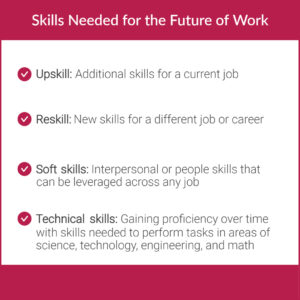 In short, CEOs and CHROs have known for years that they need to upskill and reskill their current workforce in technical and soft skills. And yet several questions still remain — Is any meaningful progress being made? Are organizations clear on what the difference is between upskilling and reskilling? Have they defined the technical and soft skills their people need for the #FutureOfWork?
In short, CEOs and CHROs have known for years that they need to upskill and reskill their current workforce in technical and soft skills. And yet several questions still remain — Is any meaningful progress being made? Are organizations clear on what the difference is between upskilling and reskilling? Have they defined the technical and soft skills their people need for the #FutureOfWork?
Let’s take a moment to dive into some of these questions a little bit deeper.
Soft Skills:
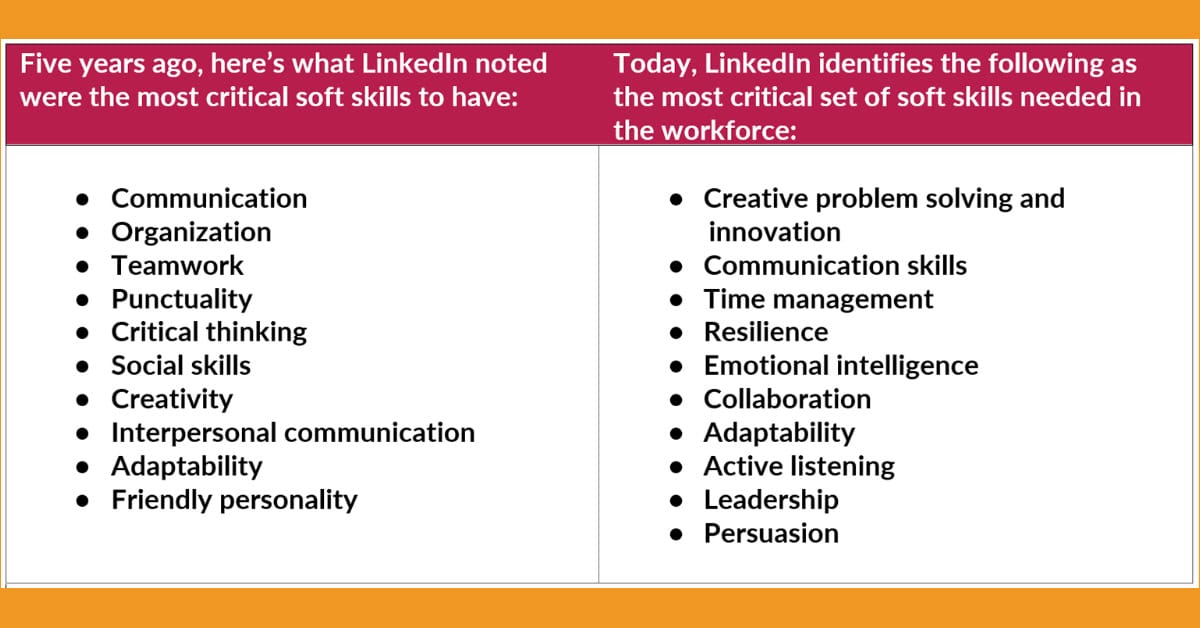 Technical Skills:
Technical Skills:
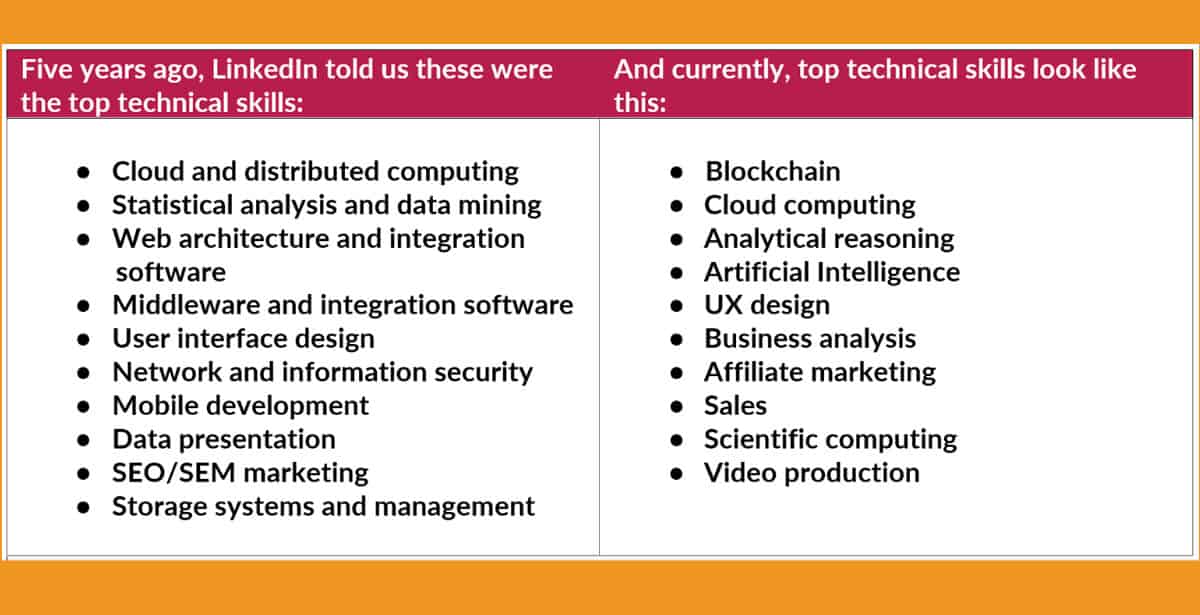
While employees need a variety of technical and soft skills to close their personal skill gaps, the last 18 months have shown us that there is one universal skill that almost all workers need across every industry: digital literacy.
And this is one of the biggest gaps the workforce faces, with many workers already lacking this skill even before the pandemic came along. However, what this gap looks like for each person may be different. Some may be perfectly comfortable using a mobile or smartphone but may not have much experience using a computer.
And some individuals may not have a computer at home or internet access beyond their smartphone.
A 2019 Pew Research Center survey revealed that people of color are more likely to have smartphone-only internet access. 23% of Black respondents and 25% of Latino respondents falling into this category, compared to 12% of White respondents.
The importance of shoring up this gap is evident with solutions like the Digital Equity Act, now under consideration in Congress. It would create two new federal grant programs to support digital literacy.
So how do we “mind the (skills) gap”? Here are a few ways to get started.
- Establish a baseline. Every organization should have a baseline understanding of the skills in their workforce today. This data is a must-have to develop upskilling and reskilling plans. Skills Base is one example of a technology company that helps organizations and teams by offering a skills inventory tool that allows companies to create a single source of truth for all their skills data. Tools like this can be instrumental in developing a baseline understanding of your employees’ current skills.
- Critical skills identification. Determine the top skills that the organization will need in the next 6 – 18 months. HR professionals can ensure that these skills are developed by working with business leaders to identify what is critical to the organization now and in the near future. Identifying critical skills is a key part of the workforce planning process and helps organizations understand if skills are where they need to be to meet goals.
- Complete a gap analysis. After identifying critical skills, organizations should then complete a gap analysis. To conduct a gap analysis, organizations can utilize formal skills tests, self-assessments, 360-degree feedback, gamified skills tests, and skill gap technology to assess employee skill level. This data can then be used to evaluate the overall skill level and help determine gaps in the organization.
- Develop a plan to fill the gaps. Once gaps have been identified, organizations can begin developing their plan to fill the gaps. This plan will look different for every organization based on where their skills gaps exist, but opportunities for filling gaps may include upskilling, reskilling, recruitment, employee retention, internal mobility, career planning, or continued strategic workforce planning. Organizations can ensure that gaps are filled for the current and future needs of the business as they create a plan.
- Execute the strategy. After determining a strategy, execution can help ensure that organizations will continue to meet goals and objectives for years to come. While the workforce and technology will undoubtedly continue to change, organizations can stay on top of their skills gaps by evaluating regularly and updating their strategy accordingly.
What’s next?
Despite a clear picture that the skills gap crisis in the workplace is growing more severe, employees are demonstrating that they are eager to continue learning. According to a global survey on technology, jobs, and skills from PwC, “77% of adults would learn new skills now or completely retrain to improve their future employability.”
While the writing may be on the wall about skills gaps, it’s not too late to turn the situation around. CEOs and CHROs are aware that they need to upskill their workforce, and workers are eager to learn new skills. With the right plan in place, organizations can work to implement practices to not only mind the gap but also bridge the skills gap towards a highly skilled workforce.
If you need assistance with a skills gap at your organization, our Sapient Insights team would be happy to help. Schedule a call with us today.
